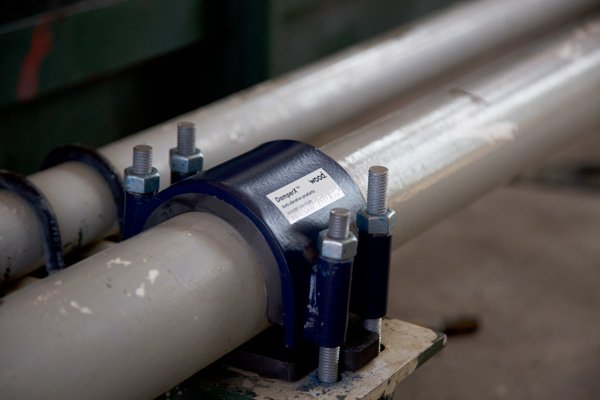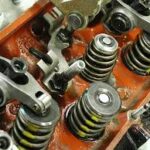Whether installed on a ship, factory, or in the local supermarket, all piping needs to well supported and vibration free. Pipe supports can incorporate springs to reduce vibration, however there are numerous other designs of specific vibration eliminators that can be fitted to the pipework.
● Piping runs require careful alignment through the proper use and location of anti-vibration elements, expansion joints along with pipe supports, pipe shoes, and guides. These basic requirements will make sure that the installed pipework will carry the liquids safely and without leaks.
Overview of Pipe Installation Techniques
● Always investigated any vibrating pipework with some urgency. The problem was normally pipe support clamps working loose, spring hangers or machinery anti-vibration mountings (AVM’s) needing re-adjustment, or machinery coupling misalignment.
● The urgency to find the cause was due to the damage that could be done to the piping runs: cracked pipes, leaking flanges, or malfunction of associated equipment.
● Piping installation is a specialist trade and should be left to the piping engineer and his team of pipe-fitters, however most mechanical/production engineers are familiar with the basics that follow.
● Pipes are fabricated to isometric drawings and full material traceability of the pipe and pipe fittings is required by piping standards. Once fabricated the pipes are painted prior to being fitted as per the installation drawings. If the fluids being carried in the pipe are subjected to temperature fluctuation, expansion bends will be incorporated along with expansion bellows or expansion gimbals that allow the safe expansion and contraction of the pipework.
● Pipe guides and shoes are fitted to the pipe to ensure the piping remains axially aligned, with the spider type being the most popular and reliable type.
Piping Vibration Analysis – An Overview
● Before we examine the various types of anti-vibration components available to engineers, it is important that we have a quick look at vibration analysis and management.
● The analysis comprises of running up the pumps supplying the piping to achieve the optimum pressure and temperature setting. A vibration monitor/transducer that records the frequency and acceleration of motions is attached securely to the pipe and a measurement taken and recorded. This is repeated at different locations every 12’ or so along the pipe run determining the pipe motions in the X, Y, and Z axis.
● A sketch showing the location of the tranducer along with the location of flanges, pipe supports and any expansion/anti-vibration components is then drawn. This may be done manually or automatically, depending on accessories incorporated within the more modern transducer.
● A typical sketch for to produce the vibration analysis manual modular plot is shown below, along with a section of a manual recording sheet.
Types of Modern Anti-vibration Components Used in Piping Installations.
● There are two basic categories of anti-vibration components, these being in-line and hanging.
● 1. In-line Devices
1. Bellows
● These consist of a set of accordion-like steel bellows that are designed and rated for different weights of piping. The bellows are encompassed between two flanges used to bolt the component into the piping run.
1. Rubber Molded Section
● This comprises an oval molded section between two flanges that are used to bolt the component into the pipework. The molded rubber protrudes through the flanges and is used as a gasket.
2. Hanging Devices
1. Sprung Hanger
● The device is designed to incorporate a pipe support and clamp. The springs are rated for various types of pipe anti-vibration control, being adjustable through a set of locknuts on the threaded bar hangers.
1. Spring Compensating
● This design also incorporates a pipe support, but only one spring is used between the structure and the piping. The compensating spring is held within a casing and is adjustable using bottle screws or some such method. These are available in numerous ratings to suit most piping applications.

